Listed below are peer-reviewed publications that highlight the technology and applications of multiplexed proteomics. Many of the publications below were contributed by the founders of IQ Proteomics
Technology

MS3 eliminates ratio distortion...
Quantitative mass spectrometry–based proteomics is highly versatile but not easily multiplexed. Isobaric labeling strategies allow mass spectrometry–based multiplexed proteome quantification...
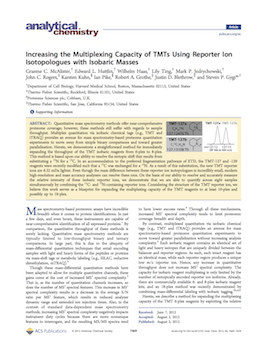
Increasing multiplexing capacity...
Quantitative mass spectrometry methods offer near-comprehensive proteome coverage; however, these methods still suffer with regards to sample throughput. Multiplex quantitation via isobaric chemical tags (e.g., TMT and iTRAQ) provides a...
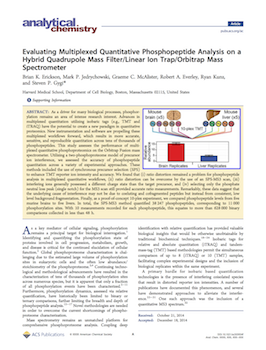
Evaluating Multiplexed Quantitative Phosphopeptide Analysis...
As a driver for many biological processes, phosphorylation remains an area of intense research interest. Advances in multiplexed quantitation utilizing isobaric tags (e.g., TMT and iTRAQ) have the potential...

MultiNotch MS3 Enables Accurate, Sensitive, and Multiplexed Detection...
Multiplexed quantitation via isobaric chemical tags (e.g., TMT and iTRAQ) has the potential to revolutionize quantitative proteomics. However, until recently the utility of these tags was questionable due to reporter ion ratio distortion resulting from fragmentation of co-isolated interfering species. These interfering signals...
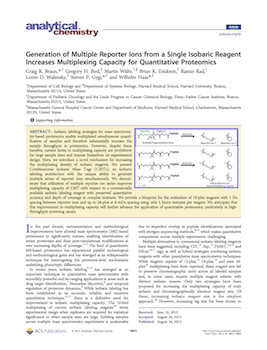
Generation of Multiple Reporter Ions from a Single Isobaric Reagent...
Isobaric labeling strategies for mass spectrometry-based proteomics enable multiplexed simultaneous quantification of samples and therefore substantially increase the sample throughput in proteomics. However, despite these benefits, current limits to multiplexing capacity...
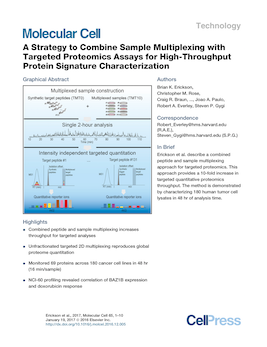
A Strategy to Combine Sample Multiplexing with Targeted Proteomics Assays...
Targeted mass spectrometry assays for protein quantitation monitor peptide surrogates, which are easily multiplexed to target many peptides in a single assay. However, these assays have generally not taken advantage of sample multiplexing, which allows up to ten analyses to occur in parallel. We present a two-dimensional multiplexing workflow...
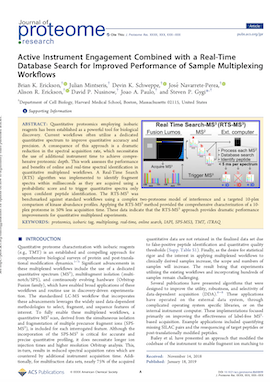
Active Instrument Engagement Combined with a Real-Time Database Search...
...This work assesses the performance and benefits of online and real-time spectral identification in quantitative multiplexed workflows. A Real-Time Search (RTS) algorithm was implemented to identify fragment spectra within milliseconds as they are acquired using a probabilistic score and to trigger quantitative spectra only upon confident peptide identification.
Applications
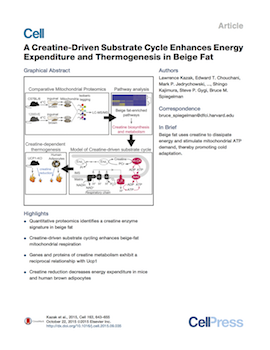
A Creatine-Driven Substrate Cycle Enhances Energy Expenditure...
Thermogenic brown and beige adipose tissues dissi- pate chemical energy as heat, and their thermogenic activities can combat obesity and diabetes. Herein the functional adaptations to cold of brown and beige adipose depots are examined using quantitative mitochondrial proteomics. We identify arginine/crea- tine metabolism as a beige adipose...
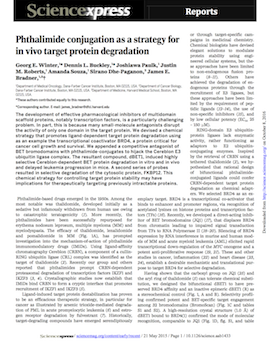
Phthalimide conjugation as a strategy for in vivo target protein degradation
The development of effective pharmacological inhibitors of multidomain scaffold proteins, notably transcription factors, is a particularly challenging problem. In part, this is because many small-molecule antagonists disrupt the activity of only one domain in the target protein. We devised a chemical strategy that promotes ligand-dependent target protein degradation...
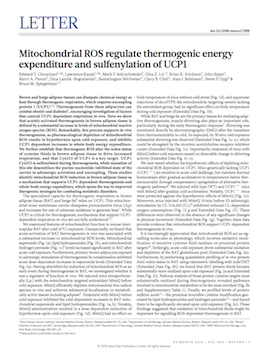
Mitochondrial ROS regulate thermogenic energy expenditure and sulfenylation of UCP1
Brown and beige adipose tissues can dissipate chemical energy as heat through thermogenic respiration, which requires uncoupling protein 1 (UCP1). Thermogenesis from these adipocytes can combat obesity and diabetes, encouraging investigation of factors that control UCP1-dependent respiration in vivo. Here we show that acutely activated thermogenesis in brown adipose...
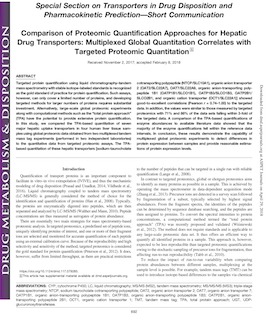
Comparison of Proteomic Quantification Approaches for Hepatic Drug Transporters...
Targeted protein quantification using liquid chromatography–tandem mass spectrometry with stable isotope-labeled standards is recognized as the gold standard of practice for protein quantification. Such assays, however, can only cover a limited number of proteins...
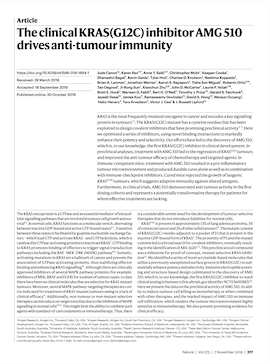
The clinical KRAS(G12C) inhibitor AMG 510...
KRAS is the most frequently mutated oncogene in cancer and encodes a key signalling protein in tumours. The KRAS(G12C) mutant has a cysteine residue that has been exploited to design covalent inhibitors that have promising preclinical activity. Here we optimized a series of inhibitors, using novel binding interactions...

Microenvironment mapping via Dexter energy transfer...
Many disease pathologies can be understood through the elucidation of localized biomolecular networks, or microenvironments. To this end, enzymatic proximity labeling platforms are broadly applied for mapping the wider spatial relationships in subcellular architectures.
